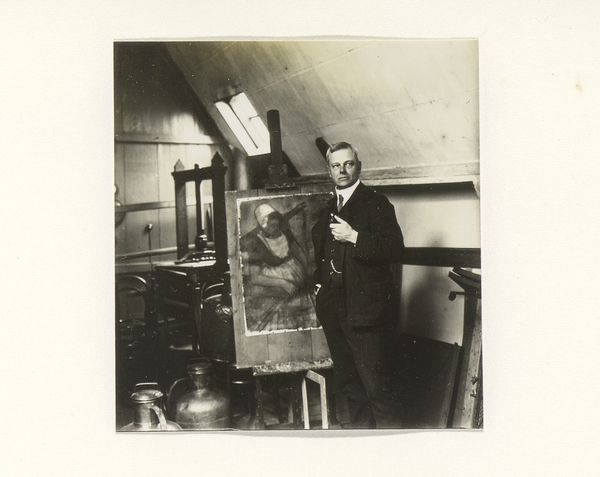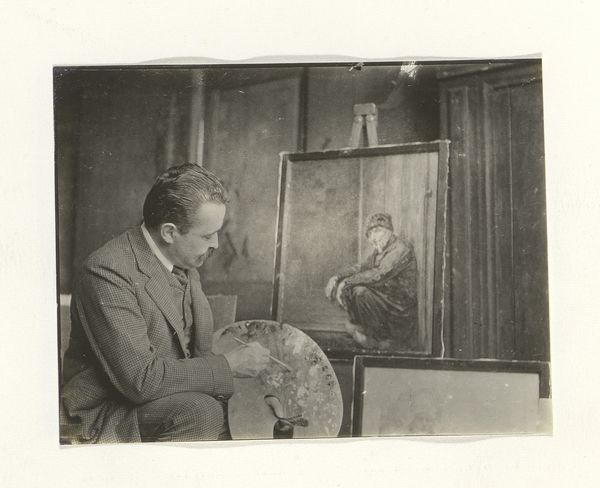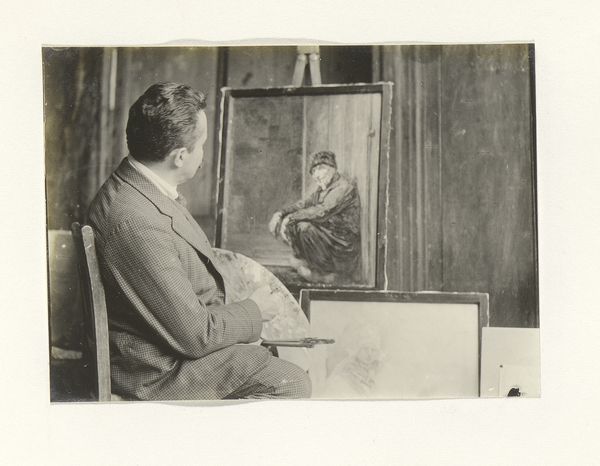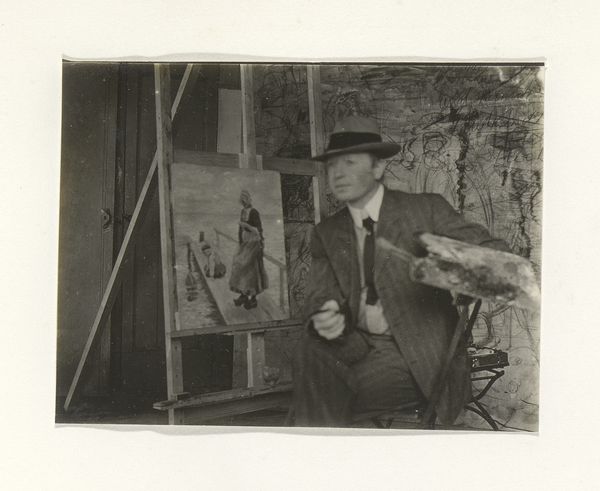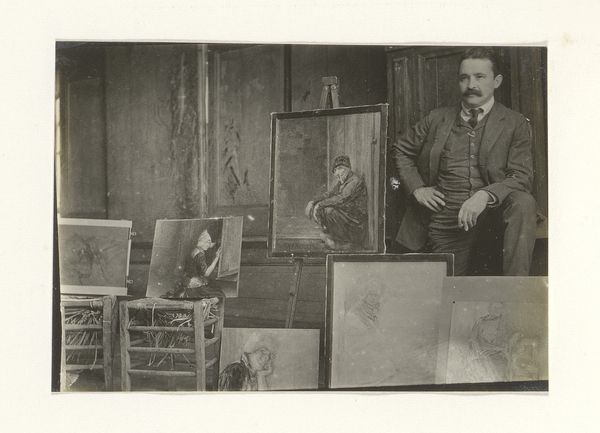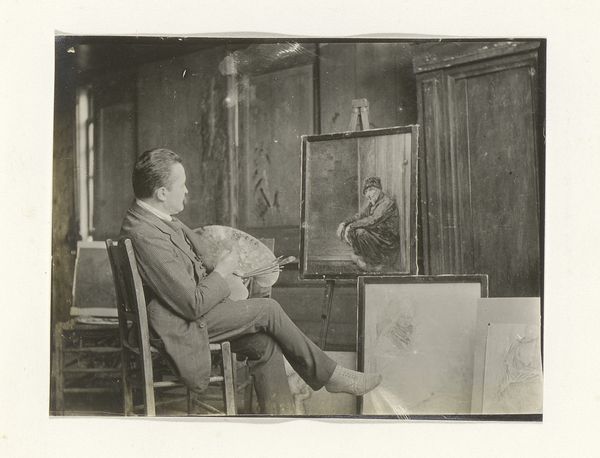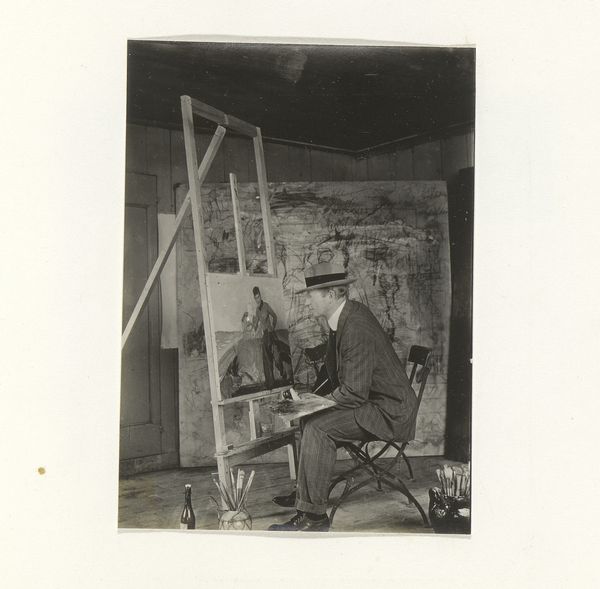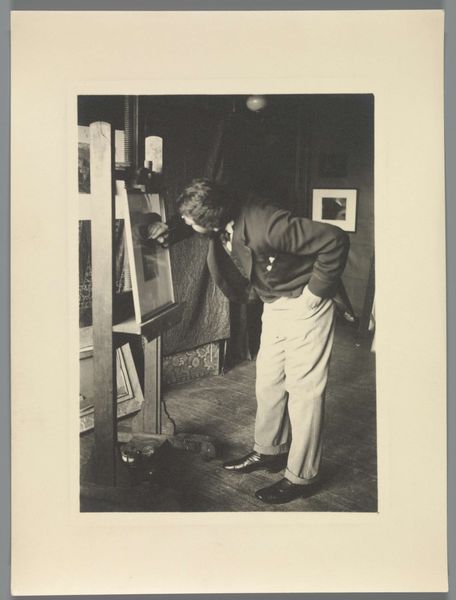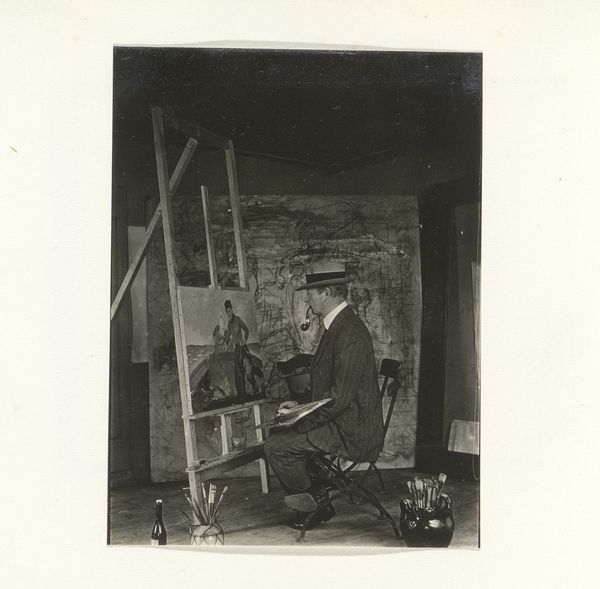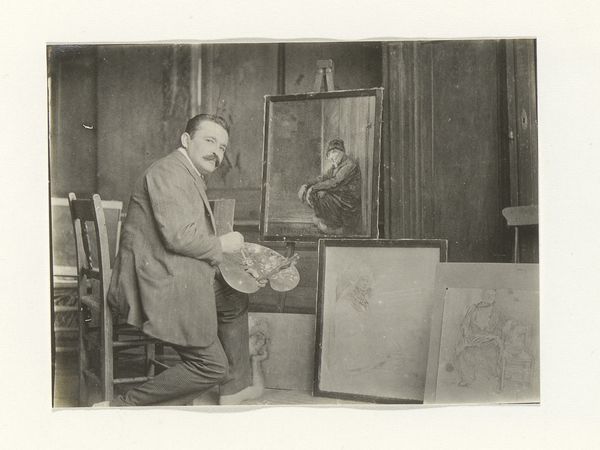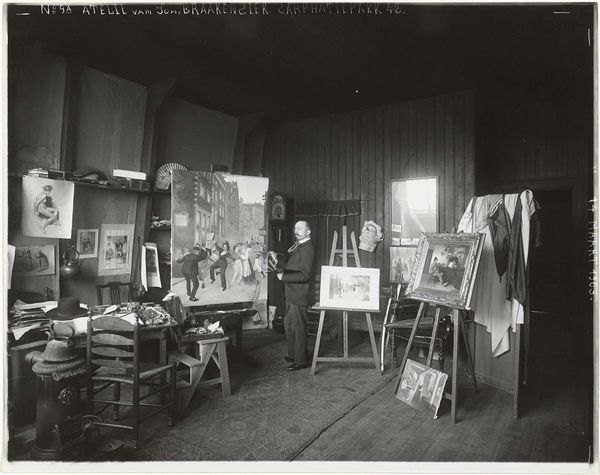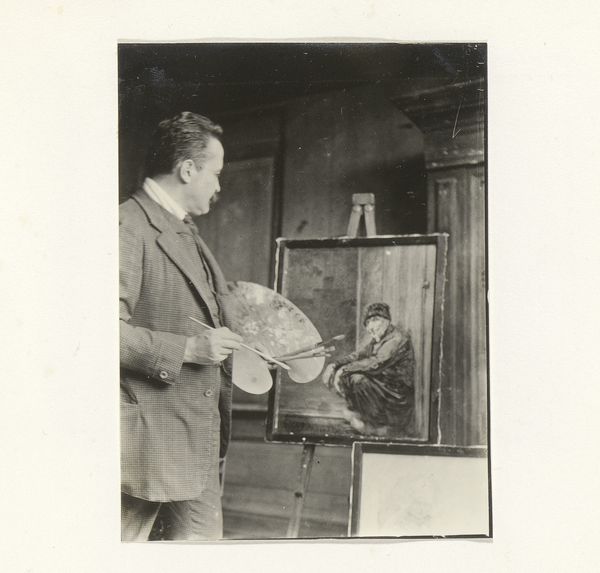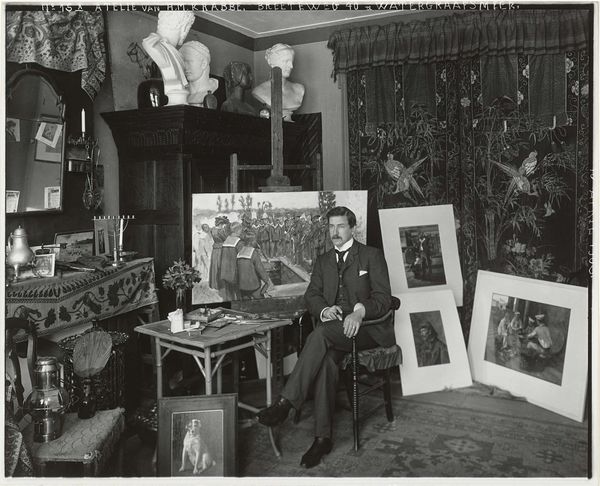
Dimensions: height 95 mm, width 76 mm
Copyright: Rijks Museum: Open Domain
Curator: Here we have a gelatin silver print, "Man in een schildersatelier," believed to be from around 1900 to 1910, and attributed to G. Hidderley. It’s a rather compelling piece. Editor: It strikes me as austere. The monochromatic palette, the stark lighting—it feels quite solemn, almost staged in its deliberate arrangement. Curator: Well, the sitter is presented as an artist, or perhaps a craftsman, posed alongside a work—presumably his own. The photograph operates on a certain understanding of the artist’s role in society. There’s a deliberate attempt to convey… dignity, perhaps. Editor: And that’s reflected in the materials, isn’t it? A photograph allows for this sort of immediate reproduction, widening access to portraiture in a way painting previously couldn’t. Yet, using the gelatin silver process still requires skill and a certain level of expense, maintaining some level of exclusivity and artistic labour. Curator: Precisely! It speaks to the evolving role of the artist and the increasing democratization of portraiture in this period, alongside traditional techniques. The work being displayed feels important, and that is partly the photograph’s own cultural importance in visually promoting work. Editor: Look closer though—the lighting is very specific, seemingly emphasizing the print on display next to him; perhaps at the cost of showing the labour. The background melts into a blur, really focusing the viewer on the objects, almost removing the setting altogether. This removes the physical work in order to bring attention to the ideas within it. Curator: True, although I see this choice also as a way of controlling how we perceive the profession of artists. By obscuring the mess and struggle of creation, it aims to construct and present an idealized view. Editor: So even the "realism" conveyed by photography can be seen as constructed... It does make me wonder about the relationship of image making to wider questions about artistic work and value during this period. Curator: Yes, the artist using an already emerging image creation technology to frame themselves a certain way—it says a lot about society's relationship to not only images, but artistic representation, as a whole. Editor: This makes this photographic work something of a self-promotion for a changing understanding of art and materiality during this shift between eras and genres. A fascinating look, overall. Curator: Indeed. I find it is more evocative once we factor in its societal, historical place.
Comments
No comments
Be the first to comment and join the conversation on the ultimate creative platform.
